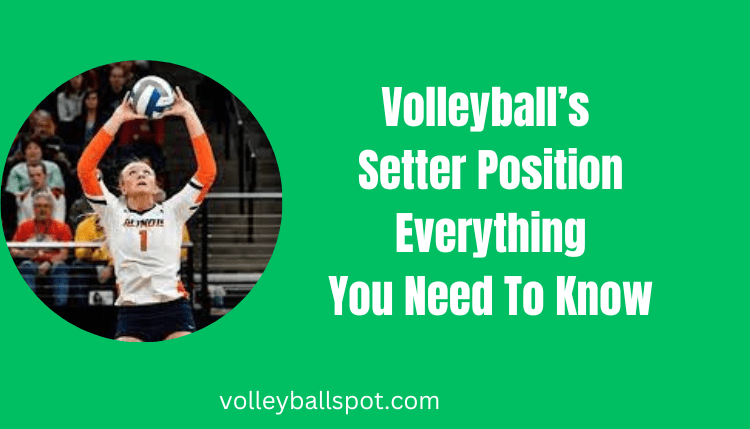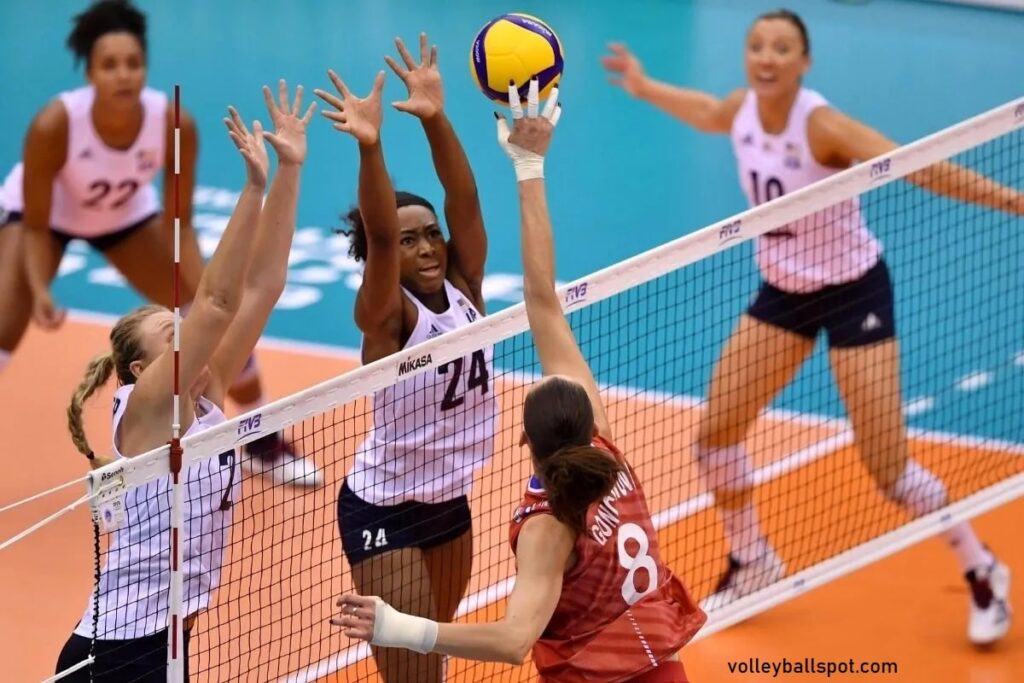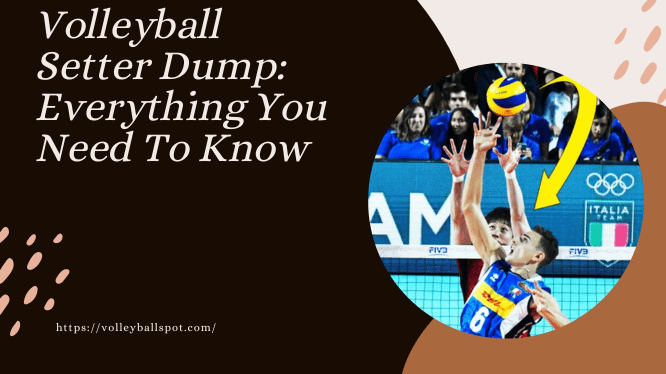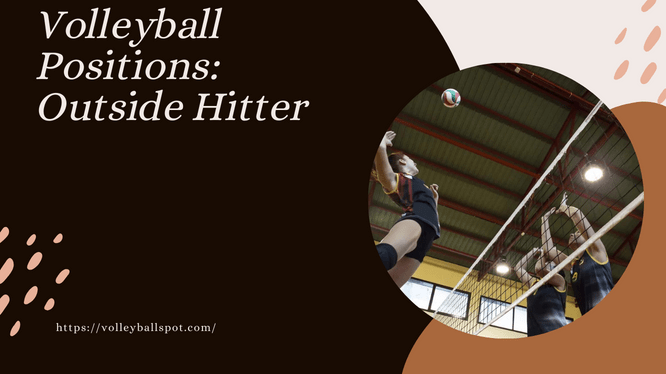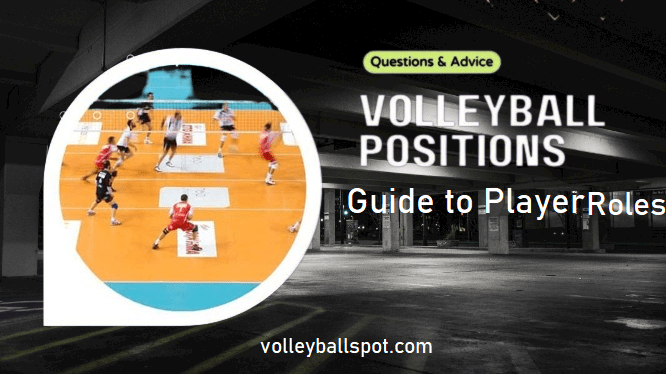
Volleyball is a team sport that requires a variety of skills and talents. Each player on a volleyball team has a unique and important role, and each position requires a specific skillset.
The six key Volleyball Positions are:
- Setter: The setter is the quarterback of the volleyball team. They are responsible for setting up the hitters for successful attacks.
- Outside hitter: The outside hitters are the primary offensive weapons on the team. They are responsible for hitting the ball hard and accurately.
- Opposite hitter: The opposite hitter is the team’s second-best offensive weapon. They are typically taller and stronger than the outside hitters, and they hit the ball from the opposite side of the court.
- Middle blocker: The middle blockers are the first line of defense for the team. They are responsible for blocking the opponent’s attacks.
- Libero: The libero is a defensive specialist. They are not allowed to hit or block the ball, but they are free to roam the backcourt and dig balls.
- Defensive specialist: The defensive specialist is a jack-of-all-trades. They are responsible for a variety of defensive tasks, including passing, digging, and serving.
There is also a seventh position, the serving specialist. Serving specialists are typically players who have a very strong serve. They are only used in exceptional circumstances, such as when a team needs to win a point quickly.
In this article, we will take a closer look at the individual roles of each of these positions. We will also discuss the starting locations for each position and the unique skillsets that are required for each role.
Let’s get started!
Volleyball Court Diagram With Positions
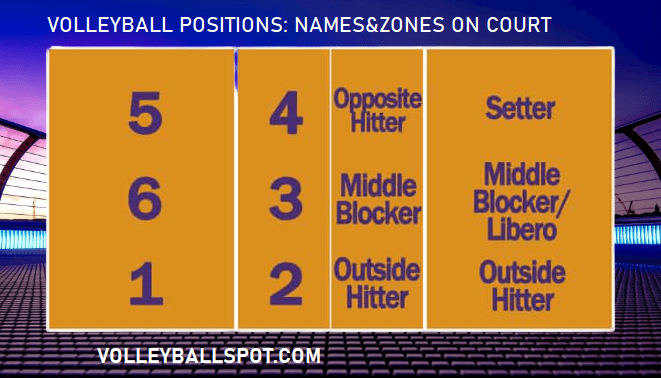
Volleyball court positions are typically referred to by numbers, with the back/middle position being 6 and the numbers going backwards to 1 as you rotate clockwise through each zone. The diagram above shows the typical home positions for each different player role.
The Setter
The setter is the quarterback of the volleyball team, responsible for setting up the hitters for successful spikes. They typically set out of position 1 or position 2 if they’re in the front court.
The middle blockers are the tallest players on the team and are responsible for blocking the opposing team’s spikes. They typically stay in the middle of the court in the 6 or 3 positions. Middle blockers are usually swapped out for the libero in the back court, so they spend most of their time in position 3.
The Outside Hitters
The outside hitters are the primary offensive weapons on the team, responsible for spiking the ball over the net and scoring points. They typically stick to positions 4 and 5, operating out of the left side of the court.
The Opposite Hitters
The opposite hitters are the right-handed counterparts to the outside hitters. They typically stick to positions 1 and 2, and they often have a strong hitting arm.
The libero is a defensive specialist who is not allowed to block or attack the ball. They typically play out of the 6 position and only in the back court.
Understanding the home positions of each volleyball court position can help you better understand the game and appreciate the different roles that each player plays.
Here are some additional insights about volleyball court positions:
- The positions of the players on the volleyball court change after each serve. This is called a rotation.
- The players on the volleyball court must be aware of their home positions and the positions of the other players on the court at all times.
- The home positions of the players on the volleyball court are important for both offensive and defensive play.
Volleyball Positions Abbreviations
Here is a quick guide to the most common volleyball positions abbreviations:
| Position | Abbreviation |
| Setter | S |
| Middle Blocker | MB |
| Outside Hitter | OH |
| Opposite Hitter | OPP |
| Libero | L |
| Defensive Specialist | DS |
Let’s now explore the individual positions and their responsibilities.
Setter
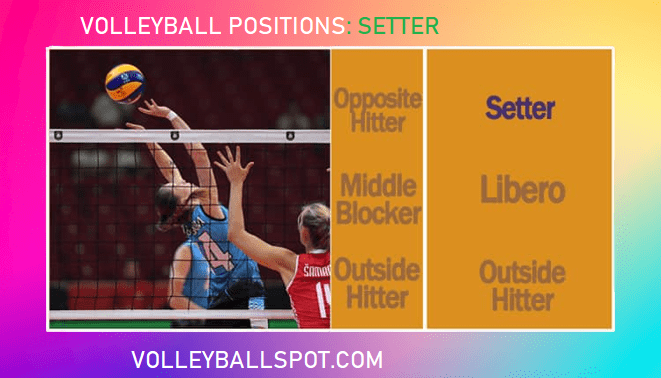
The Setter: The Orchestrator of the Team’s Offense
The setter position is the quarterback of the volleyball team. They are responsible for delivering the ball from the passers in the back court to the hitters in the front court. They are the brains of the operation, calling the shots and dictating what happens on court. They are master communicators and natural leaders.
Setter is known as the brain of the team
The Setter’s Role
The setter’s primary role is to set up the hitters for successful spikes. They do this by accurately placing the ball in the perfect hitting window for the hitter to attack. This requires a high degree of skill and precision, as well as the ability to read the opposing team’s defense.
A great setter will be able to identify holes in the defense and set up the hitters accordingly. They will also be able to coordinate attacks with the other hitters, so that they can all work together to score points.
The Setter’s Leadership
In addition to their technical skills, the setter is also a key leader on the team. They need to be able to motivate and encourage their teammates, keeping them focused and positive throughout the game. They also need to be able to make quick decisions and communicate effectively with the other players.
The Setter’s Impact
The setter is a vital part of any volleyball team. They are the ones who make the offense go, and they can be the difference between winning and losing. If you’re looking for a challenging and rewarding position in volleyball, then the setter is the one for you.
Here are some additional insights about the setter’s role:
- The setter is often the team captain, but even if they are not, they need to be able to lead by example and motivate their teammates.
- The setter needs to have a good understanding of the opposing team’s defense and be able to adjust their sets accordingly.
- The setter needs to be able to communicate effectively with their teammates, both verbally and nonverbally.
Setters Use Secretive Hand Signals to Communicate
Setters are the quarterbacks of the volleyball team. They are responsible for delivering the ball to the hitters in the front court, and they often use hand signals to communicate with their teammates. This is done secretively in between plays so that the opposing team cannot see what the setter is planning.
The hand signals that setters use vary depending on the team and the formation that they are using. However, some common signals include:
- One finger: This indicates a quick set to the outside hitter.
- Two fingers: This indicates a set to the middle hitter.
- Three fingers: This indicates a set to the opposite hitter.
- Closed fist: This indicates a “dump” ball, which is a ball that is intentionally hit into the ground.
In addition to using hand signals, setters also communicate with their teammates verbally. This is especially important when the team is running a complex play. The setter will often call out the play to the hitters so that they know what to expect.
Setters are essential to the success of any volleyball team. They are the ones who control the offense, and they need to be able to communicate effectively with their teammates in order to be successful.
Responsibilities and Attributes of a Setter
The setter is the quarterback of the volleyball team. They are responsible for delivering the ball to the hitters in the front court, and they need to have a variety of skills and attributes in order to be successful.
Strong Leaders
Setters need to be strong leaders. They need to be able to take charge of the situation and make decisions that will help their team win. They also need to be able to motivate and inspire their teammates.
Accurate and Consistent
Setters need to be accurate and consistent. They need to be able to set the ball in the perfect spot so that their hitters can put it away. This requires a high degree of skill and precision.
Decently Strong
Setters need to be decently strong. They often have to set the ball really high and far across the court. This requires a lot of power and strength.
Quickness
Setters need to be quick. They often have to chase down dodgy passes to get underneath the second ball. This requires speed and agility.
Height
Being tall is also an advantage for setters. They can block more efficiently and make the opposition blocker’s job a lot tougher.
In addition to these physical attributes, setters also need to have a good understanding of the game. They need to be able to read the opposing team’s defense and set the ball accordingly. They also need to be able to communicate effectively with their teammates.
Setters are essential to the success of any volleyball team. They are the ones who control the offense, and they need to be able to do it all.
Outside Hitter
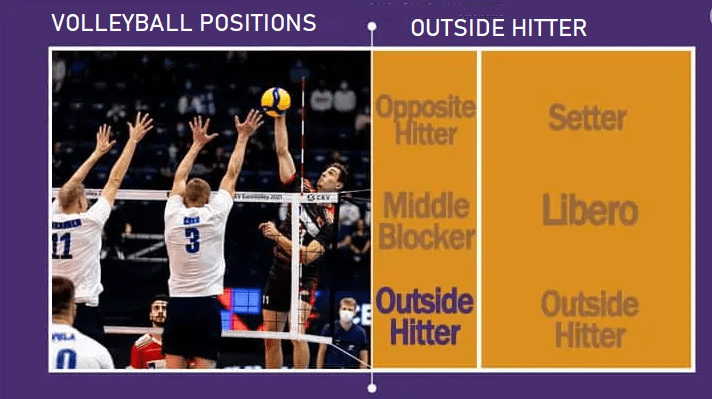
The Outside Hitter: The Rockstar of Volleyball
The outside hitter is one of the most important players on the volleyball court. They are responsible for attacking from the left side of the court, which is often the most open area. They are also typically the best passers on the team, and their ability to receive serves can set up their team for easy points.
The Outside Hitters: Stars of the team
t the youth level, outside hitters are often the stars of the team. They are usually the tallest and most athletic players, and they can jump high and hit hard. They are often the recipient of more sets than the middle or opposite hitters, and they are often the ones who are called upon to make the game-winning kill.
When play breaks down and the defense is scrambling, the second ball is often “released” to the outside hitter. This means that the setter will set the ball to the outside hitter even if it is not a perfect pass. The outside hitter is then responsible for getting the ball over the net and scoring a point.
Outside hitters are essential to the success of any volleyball team. They are the ones who put the ball away and score points, and they can be the difference between winning and losing.
Outside Hitter: Responsibilities & Attributes
Outside hitters are some of the most important players on a volleyball team. They are responsible for attacking from the outside of the court, and they need to be reliable, consistent, and athletic.
Reliable and consistent
A good outside hitter can’t be repeatedly shanking passes or hitting the ball into the net. They need to be able to consistently put the ball away, and they need to be able to pass the ball well so that their team can run a smooth offense.
The Strategic Offensive Force
A skilled outside hitter possesses both power and finesse in their offensive play. They have the ability to determine when to deliver a powerful hit or strategically tip the ball around the block.
Athletic
Outside hitters need to be able to jump high and hit the ball with a lot of power. They also need to be agile and coordinated so that they can transition quickly from defense to offense.
In addition to these physical and technical attributes, outside hitters also need to be mentally tough. They need to be able to handle the pressure of being one of the team’s main offensive weapons.
If you’re looking to become an outside hitter, be sure to work on your skills and your mental toughness. With hard work and dedication, you can be a valuable asset to your team.
Opposite Hitter
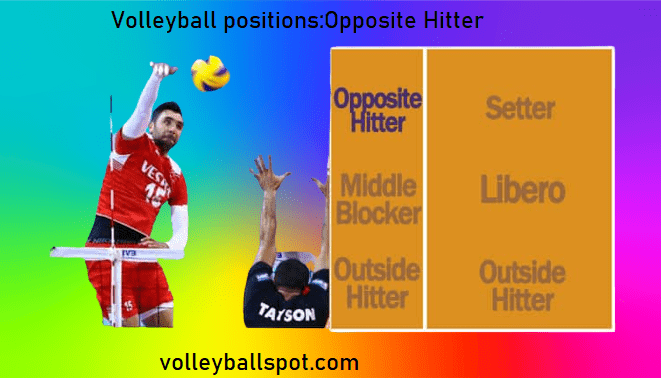
The opposite hitter is a hybrid player who combines the roles of outside hitter and middle blocker. They are responsible for attacking and blocking on the right side of the court, and they can also step in to set the ball if needed.
Opposite hitters don’t need to be great passers, as they rarely pass the ball. This is because they are always positioned on the right side of the court, and the setter usually sets the ball to them.
Instead, opposite hitters focus on their attacking and blocking skills. They are often tall and athletic, with a powerful jump. This allows them to hit the ball hard from both the front row and the back row.
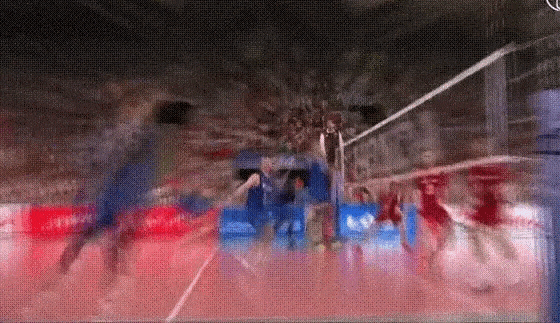
One of the most impressive things to see in volleyball is an opposite hitter crushing a back row attack. These players have the power and the timing to hit the ball with great force, even when they are not in the front row.
Opposite hitters are often left-handed, as this gives them an advantage when attacking from the right side of the court. However, there are also many successful right-handed opposite hitters.
In addition to their attacking and blocking skills, opposite hitters also need to be good blockers. They are matched up against the opposing team’s outside hitter, so they need to be able to stop their opponent’s attacks.
Opposite hitters are an essential part of any volleyball team. They provide a powerful offensive threat, and they can also help to shut down the opposing team’s offense.
Opposite Hitter: Responsibilities & Attributes
Opposite hitters are one of the most versatile players on the volleyball court. They are responsible for attacking from both the front and back rows, as well as blocking and passing. This makes them a valuable asset to any team, as they can provide a scoring threat from anywhere on the court.
What are the responsibilities of an opposite hitter?
- Attacking from the back row: This is one of the most important responsibilities of an opposite hitter. They need to be able to hit the ball around blocks and find the open court, even from the back row.
- Blocking: Opposite hitters also need to be good blockers. They are often matched up against the opposing team’s outside hitter, who is typically one of their best offensive players.
- Passing: While passing is not as important for opposite hitters as it is for other positions, they still need to be able to pass the ball consistently. This will help their team to maintain possession and set up their offense.
What are the attributes of a good opposite hitter?
- Height and athleticism: Opposite hitters need to be tall and athletic. This will give them the reach and power they need to hit the ball hard and block effectively.
- Left-handedness: While it is not essential, being left-handed is an advantage for opposite hitters. This is because it makes it more difficult for the opposing team to block their shots.
How can I become a better opposite hitter?
- Practice your hitting from the back row. This is one of the most important skills for an opposite hitter. The more you practice, the better you will become at hitting around blocks and finding the open court.
- Work on your blocking. Opposite hitters need to be good blockers. This will help your team to defend against the opposing team’s outside hitters.
- Improve your passing. While passing is not as important for opposite hitters as it is for other positions, it is still important to be able to pass the ball consistently.
Middle Blocker
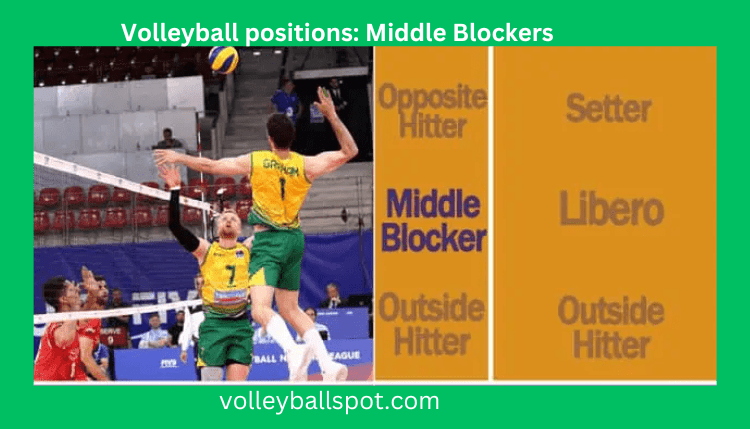
Middle blockers are the giants of the volleyball court. They are typically the tallest players on the team, and their height gives them a major advantage in blocking and attacking. Middle blockers are responsible for running quick attacks through the middle of the court, as well as blocking the opposing team’s attacks. They must be quick, agile, and have a good vertical jump to be successful in this position.
At the junior level, middle blockers are often seen as the “dumb” players. They may not be as athletic or technically proficient as the other players on the team, but they have one thing that makes them invaluable: size.
Middle blockers need to be able to block attacks from all over the court, so they need to have strong footwork and quick reaction times. They also need to be able to transition quickly from defense to offense, as they are often the first players to attack the ball.
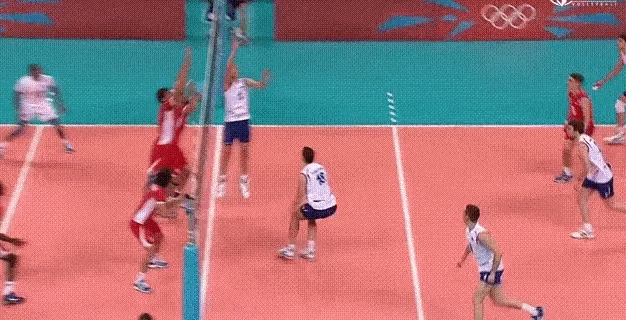
Offensively, middle blockers often run “quicks,” which are high-paced attacks through the middle of the court. These attacks require incredible timing and precision, as the middle blocker needs to contact the ball almost immediately after it’s left the hands of the setter.
Quicks are a great way to force commitment from the opposing middle blocker, which can free up defensive pressure for a wing attack.
So, while middle blockers may not be the most athletic or technically proficient players on the court, they are a force to be reckoned with. Their size and blocking ability make them a valuable asset to any team, and their quick attacks can be a major weapon in the offense.
Middle Blocker: Responsibilities & Attributes
Middle blockers are essential players in volleyball. They are responsible for blocking the opposing team’s attacks and running quick attacks through the middle of the court.
Defensive Powerhouse
Middle blockers are the defensive backbone of the team. They are responsible for coordinating blocking with the wing players and establishing position and timing. A weak blocking presence can be a major liability, so middle blockers need to be able to block quick attacks and get up high to block spikes.
Height
Height is an essential attribute for middle blockers. The closer your hands are to the top of the net, the quicker you’ll be able to form a block. This is especially important when blocking quick attacks, which can come at you in a hurry.
Fast Footwork
At the elite level, setters move the ball to the sticks really quickly. As a top middle blocker, you need to be able to move your feet extremely efficiently to get into position to block the opposition hitter. This is a skill that takes time and practice to develop.
Quick Attacks
Middle blockers are also responsible for running quick attacks through the middle of the court. These attacks are designed to force the opposing middle blocker to commit, which can free up defensive pressure for a wing attack. Quick attacks require incredible timing and precision, as the middle blocker needs to contact the ball almost immediately after it’s left the hands of the setter.
Libero
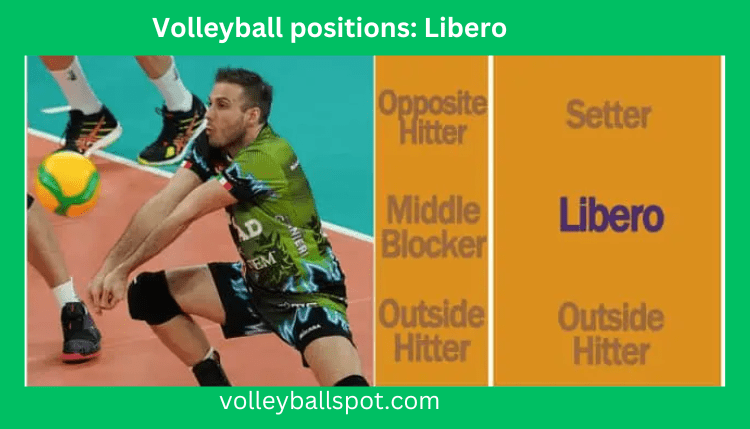
The libero is a volleyball position that is dedicated to passing and defense. They are typically the shortest player on the team, but they make up for it with their incredible agility and accuracy.
Liberos are responsible for receiving serves and digging balls that are hit into the back row. They are also often the ones who make diving saves to keep the ball in play.
Because liberos are not allowed to spike the ball, they are able to focus solely on passing and defense. This allows them to develop their skills to a very high level.
Liberos wear a different colored jersey than the rest of the team so that the referees can easily identify them. This is important because liberos are not allowed to rotate into the front row or attack the ball.
Liberos are an essential part of any volleyball team. They provide a valuable defensive presence and can make a big difference in the outcome of a match.
Liberos are the captains of the backcourt. They are responsible for receiving serves, digging attacks, and setting up plays. They are typically smaller and quicker than other players, and they have excellent ball control skills.
Liberos: Responsibilities & Attributes
Willing to Take Command
Liberos need to be able to read the play and anticipate where the ball is going. They also need to be able to communicate effectively with their teammates so that they can coordinate their defensive efforts. A good libero is like a setter in that they are the leader of the backcourt. They need to be able to take charge and make sure that the team is prepared for anything.
Accurate Setter
Liberos often need to set the ball for their teammates if the setter is unable to get to the second ball. This means that they need to be able to set long distances with a high degree of precision. Liberos who can set well give their team more options on offense and make it more difficult for the opponent to defend.
Extremely Quick and Agile
Liberos need to be able to move quickly and cover a lot of ground. They need to be able to dig attacks that are hit directly at them, and they also need to be able to get to balls that are hit in the seam between two players. Liberos who are quick and agile are able to make plays that other players simply cannot.
The Libero: A Vital Role
Liberos play a vital role in any volleyball team. They are responsible for keeping the ball in play and setting up their teammates for scoring opportunities. If you are looking for a challenging and rewarding position in volleyball, the libero is a great option.
The Defensive Specialist: A Valuable Asset in High-Pressure Situations
The defensive specialist (DS) is a unique position in volleyball that is often overlooked. However, DSes can be a valuable asset to a team, especially in high-pressure situations.
What is a DS?
A DS is a player who specializes in passing and digging. They typically have all the same skills as a libero, but they do not wear a different colored jersey and can substitute into the game for any player in any position.
Why are DSes important?
DSes are important because they can help a team maintain possession of the ball in key moments. They are often used to replace weak passers or defenders, or to come into the game to help deal with a particularly strong server.
How do DSes help in high-pressure situations?
In high-pressure situations, every point counts. A DS can help a team secure a side out or win a critical rally by providing a reliable pass or making a key dig. They can also help to boost the team’s morale and confidence.
Defensive Specialist: Responsibilities & Attributes
The defensive specialist (DS) is a unique position in volleyball that requires a special set of skills. DSes are often called upon to come into the game in high-pressure situations, and they need to be able to perform well under pressure.
Staying Cool Under Pressure
One of the most important qualities of a DS is the ability to stay calm and collected under pressure. When the score is close and the game is on the line, a DS needs to be able to make accurate passes and dig critical balls. They cannot afford to get rattled or make mistakes.
Being Accurate and Agile
In addition to staying cool under pressure, DSes also need to be accurate and agile. They need to be able to pass the ball consistently and accurately, even when they are under pressure. They also need to be able to move quickly and cover a lot of ground, in order to dig balls that are hit directly at them or in between other players.
The Value of a DS
DSes are an important asset to any volleyball team. They can be the difference-maker in close games, and they can help a team maintain possession of the ball. If you are looking for a challenging and rewarding position in volleyball, the DS is a great option.
Serving Specialist
The serving specialist is a unique position in volleyball that is rarely used, but can be very effective. Serving specialists are players who are brought into the game solely to serve. They typically have a very strong serve that can be used to put pressure on the opposing team and score points.
The Perfect Situation for a Serving Specialist
Serving specialists are most effective in close games, when every point counts. If your team is down by a few points and you need to change the momentum of the game, a serving specialist can be a valuable asset. They can also be used to break a serve receive rhythm or to start a rally.
You’re up 27-26 in the final set of a close match. The opposing team has a strong serve reception lineup and an extremely powerful attacker in position. Your team’s worst server is heading to the service line.
How to Become a Serving Specialist
If you are interested in becoming a serving specialist, there are a few things you can do to improve your chances of success. First, you need to develop a strong serve. This means being able to hit the ball hard and accurately. You also need to be able to vary your serve, so that the opposing team cannot predict where the ball is going.
Conclusion
Volleyball is a complex sport with a variety of positions and roles. Each position has its own unique challenges and responsibilities. In this article, we have explored the different volleyball positions in detail. We have discussed the roles of each position, the skills and attributes that are important for each position, and the best volleyball shoes for each position.
We hope that this article has been informative and helpful. If you are interested in learning more about volleyball positions, we encourage you to do some further research. There are many resources available online and in libraries that can provide you with more information.
Volleyball Positions FAQs
What is the hardest volleyball position?
The setter is responsible for creating offensive opportunities for their team. They do this by receiving the pass from the defense and setting the ball up for the hitters. The setter needs to have a good understanding of the hitters’ strengths and weaknesses, as well as the opposing team’s defense. They also need to be able to communicate effectively with their teammates so that everyone is on the same page.
However, there is no clear-cut answer to this question, as each position brings its own unique challenges. For example, middle blockers must be tall and strong in order to block effectively, while outside hitters must be able to hit hard and accurately.
Ultimately, the hardest volleyball position is the one that you are least suited for. If you are not a natural leader or communicator, then the setter position may be too challenging for you. But if you are tall and strong, then you might thrive as a middle blocker.
What are the tallest and shortest volleyball positions?
In general, the tallest volleyball positions are middle blocker and opposite, while the shortest position is libero. However, there are always exceptions to the rule. For example, I played as the middle blocker for the Australian U17 team, even though I was one of the shortest players on the team.
The libero is typically one of the shortest players on the court because they are not allowed to spike the ball. This means that they do not need to be as tall as other players in order to reach the net.
What volleyball position wears a different shirt?
The libero is the only volleyball position that wears a different colored jersey to the rest of the team. This is because the libero is only allowed to play in the back row and cannot spike the ball. The different colored jersey helps the referees to keep track of the libero’s position on the court.
What positions serve in volleyball?
In volleyball, all positions except for the libero are required to serve. The libero is allowed to serve in one rotation under USA volleyball rules, but not in Europe..
What are the best volleyball positions for tall players?
If you’re tall, you’re in luck! There are two volleyball positions that are perfect for you: middle blocker and opposite. These positions require a lot of blocking and less passing, so height is more important than in other positions.
Middle Blocker
The middle blocker is the tallest player on the team and is responsible for blocking the opposing team’s hitters. They typically stand in the middle of the net and use their height to their advantage. Middle blockers need to be quick and agile, as they need to be able to react to the opposing team’s hitters’ shots.
Opposite
The opposite is also a tall position, and they are responsible for hitting the ball from the opposite side of the net. They typically have a powerful hit and are able to score points from the back row. Opposites need to be able to jump high and hit the ball with accuracy.
What are the hitting positions in volleyball?
In volleyball, the positions that hit the ball the most are the outside hitter, the opposite, and the middle blocker. The outside hitter typically receives slightly more opportunities to hit the ball than the other two positions, followed by the opposite, and then the middle blocker.
The setter is also occasionally able to hit the ball, especially if they are left-handed. However, the libero is prohibited from hitting the ball.
Why Do These Positions Hit the Ball More?
There are a few reasons why these positions hit the ball more than others. First, these positions are typically taller than the other positions, which gives them an advantage when hitting the ball over the net. Second, these positions are typically more athletic than the other positions, which allows them to jump higher and hit the ball with more power. Third, these positions are typically more experienced than the other positions, which gives them a better understanding of how to hit the ball effectively.
What Are the Other Positions in Volleyball?
In addition to the outside hitter, the opposite, the middle blocker, and the setter, there are two other positions in volleyball: the defensive specialist and the libero. The defensive specialist is responsible for passing the ball and defending against the opposing team’s attacks. The libero is a specialized defensive position that is prohibited from hitting the ball.
What does OH & OPP mean in volleyball?
OH, refers to the outside hitter position, and OPP refers to the opposite hitter.
What does MH refer to in volleyball?
Occasionally, people will refer to the middle blocker as a middle hitter and so MH means the same thing as MB.

